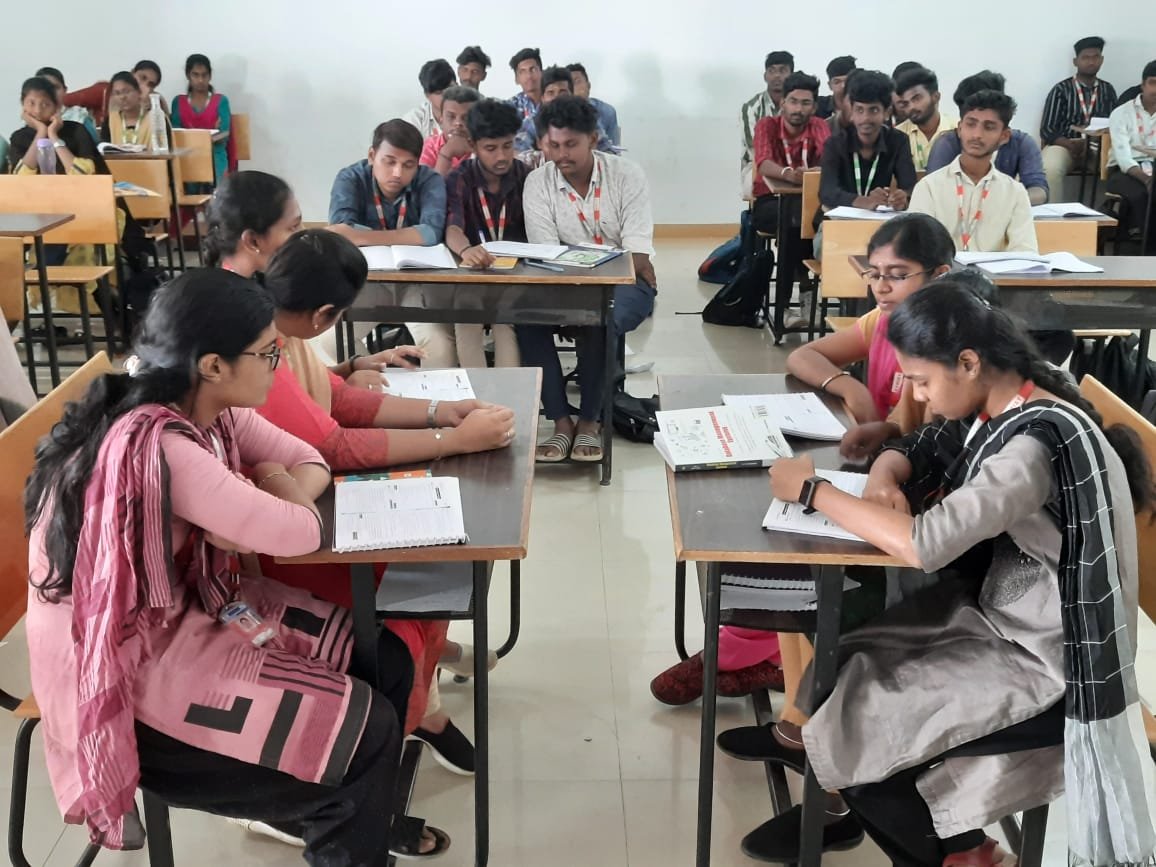Brainstorming
Process for generating creative ideas and solutions through intensive and freewheeling group discussion. Every student in the class is encouraged to think aloud and suggest as many ideas as possible, no matter seemingly how outlandish or bizarre. Analysis, discussion, or criticism of the aired ideas is allowed only when the brainstorming session is over and evaluation session begins.

Brainstorming activity in Distributed System
Mind Map
Mind map is a visual tool used to organize information graphically. It is hierarchical and represents relationships among parts of the whole. A mind map usually begins with a single concept, and then drawn as an image in the center of a blank page, where associated representations ideas will be added, such as words and images. Main ideas will be connected directly to the central concept, and other sub topics branch out from the major ones. Mind mapping helps to think, collect knowledge, remember and create ideas.

Mind mapping for Theory Of Computation

Mind mapping for Object Oriented Programmming
Video Lecture
Video lecture is a modern method of learning which comes with numerous benefits of its own. This method is individual focused, easy for teachers, and keeps the students interested in the whole process. Video lectures are one such way, using which students can improve the overall learning experience of classroom. With video lectures, students can learn anywhere from their mobile devices: laptops, tablets or smart phones. With video lectures, all students can learn at their own individual pace, which will maximize the results of e-Learning.

INTERACTIVE DISPLAY
Role Play
Role play is a technique that allows students to explore realistic situations by interacting with other people in a managed way in order to develop experience and trial different strategies in a supported environment. Depending on the intention of the activity, participants might be playing a role similar to their own or could play the opposite part of the conversation or interaction.
Key benefits of role play

Role Play activity in Operating System
Fish Bowl
Students will be given a topic to study and research. Then a small group of students will start discussing the topic while others will sit around them taking notes and not contributing. The students in the middle are fish and others are bowl. This method is applied for the subjects like Software engineering, Object Oriented Analysis and Design.

Fish Bowl activity in DBMS
Group discussion
Group discussion provides opportunities for student to speak in front of others and receive feedback from them. It increases active participation of everyone and provides platform to express their ideas. Our students are encouraged to participate and express their ideas in technical activities, technical debate and so on.

Group Discussion
Peer to Peer Learning
It is considered as ‘student-to-student’ support system. In this system, the students will be formed as a group and each one of the group will assist others to learn. There will be a leader for each group who is taking care of the discussion named as Peer Assisted Leader (PAL). For the problematic subjects such as Theory of Computation, Design and analysis of algorithms and mathematics subjects our students are using this method for better understanding.

Peer to Peer Learning
Flipped Classroom
A Flipped classroom is an instructional strategy and a type of blended learning that reverses the traditional learning environment by delivering instructional content, often online, outside of the classroom. For subjects such as computer networks, artificial intelligence, cryptography and network security, our students are encouraged to learn by them from online and they would discuss with their peer and then check the content with their findings.

Flipped Classroom in Distributed System
Virtual Programming Lab
Virtual Programming Lab is an activity module that manages programming assignments. That lets edit and execute programs and enable the automatic and continuous assessment. In our campus we are using Digipro, e-box for the programming assistance.

Terv Tool Virtual Programming Lab